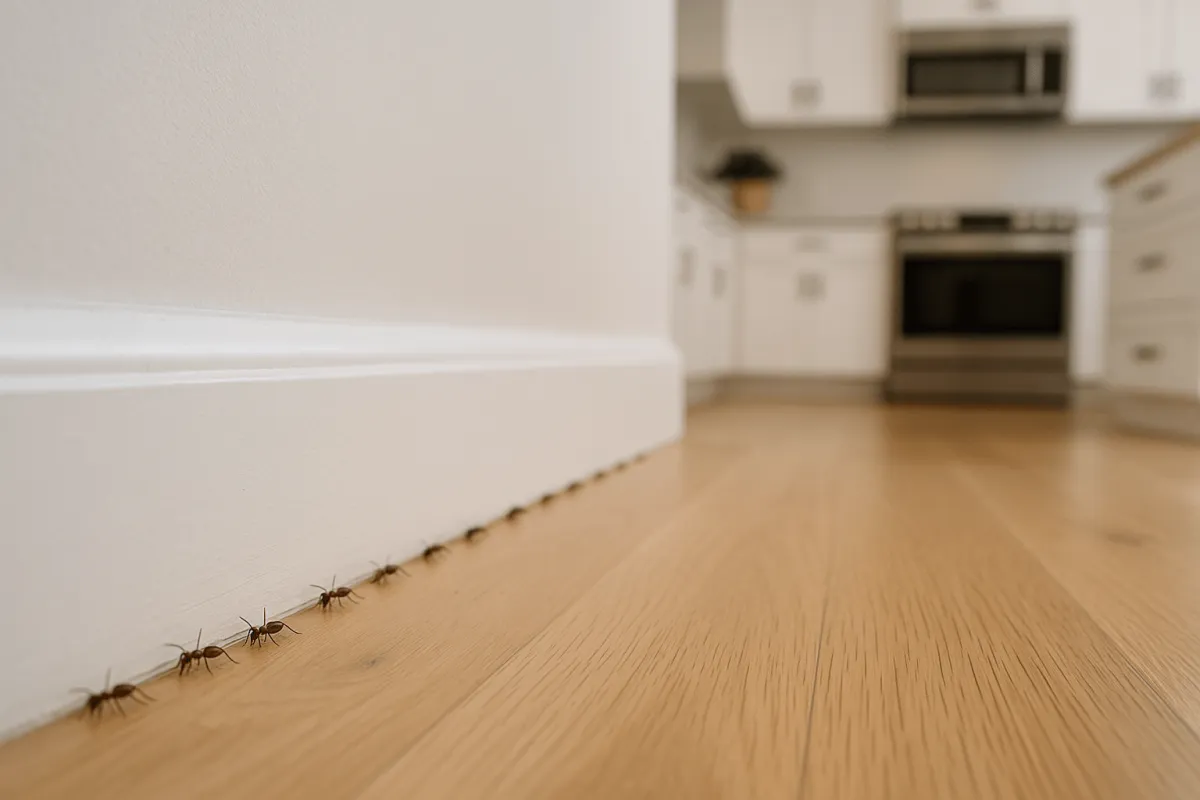
Why Pest Problems Often Start in the Crawl Space
Why Pest Problems Often Start in the Crawl Space (And How to Stop Them)
When homeowners spot a mouse in the kitchen or a trail of ants along the baseboards, the first instinct is to check the cabinets, traps, or maybe the yard. But many don’t realize the real problem might be lurking beneath their feet — in the crawl space.
Crawl spaces are dark, damp, and largely undisturbed — the perfect environment for pests to settle in and spread. In fact, many full-blown infestations begin here, out of sight and out of mind, until the damage has already been done.
The Ideal Breeding Ground: Why Pests Love Crawl Spaces
Crawl spaces are attractive to pests for three simple reasons: shelter, moisture, and access.
Shelter: Crawl spaces are rarely visited, providing a quiet, safe haven for rodents, insects, and spiders.
Moisture: Leaky pipes, humidity, or poor drainage create the damp environment that pests thrive in.
Access Points: Vents, cracks in the foundation, and gaps around utility lines offer easy entry and exit.
To a pest, a crawl space is more than a hideout — it’s a permanent home.

The Most Common Crawl Space Invaders
Let’s look at who’s likely living beneath your home:
1. Rodents (Rats and Mice)
Rodents are notorious for nesting in crawl spaces. They chew through insulation, wiring, and even wood, creating serious safety and structural hazards. They also leave behind droppings that contaminate the air circulating through your home.
2. Ants
Many species of ants, especially carpenter ants, use crawl spaces to access wooden structures. If there’s moisture-damaged wood, it’s an open invitation.
3. Spiders
Spiders don’t typically damage structures, but their presence often signals a wider pest issue — they go where the food (other bugs) is.
4. Termites
A damp, unsealed crawl space with wood-to-soil contact is a dream scenario for termites. Their activity often goes unnoticed until structural damage becomes severe.
5. Cockroaches and Silverfish
These pests thrive in humid environments. Crawl spaces with standing water or poor ventilation are their ideal habitat.

How Crawl Space Pests Make Their Way Inside
Crawl space infestations don’t stay contained — they spread. Once pests have settled in, your home becomes their playground.
Rodents squeeze through floor gaps, plumbing openings, and HVAC access points. They often end up in attics, pantries, and wall voids.
Insects climb through cracks, ductwork, and vents. Once inside, they infest kitchens, bathrooms, and anywhere else with warmth and moisture.
Spiders and silverfish follow moisture and food sources upward, often surprising you in sinks, tubs, or corners of living spaces.
Your crawl space becomes a launchpad — and once they’re in, they’re hard to remove without professional help.
Crawl Space Conditions That Encourage Infestations
Several crawl space issues create the perfect pest environment:
Standing water or puddles from poor drainage
High humidity due to lack of a vapor barrier or poor ventilation
Insulation gaps that offer nesting materials and entry points
Cracked or open foundation vents
Clutter like stored materials, cardboard, or wood debris
Each one of these elements on its own is a problem. Combined, they create an open invitation.

Prevention Starts with the Crawl Space
To prevent pests from taking over, crawl space maintenance is essential. Here’s what an effective strategy includes:
✔️ 1. Moisture Control
Install a vapor barrier, seal the ground, and make sure gutters and downspouts direct water away from the home. Moisture is the root cause of both mold and pest problems.
✔️ 2. Air Sealing and Insulation
Sealing vents, rim joists, and other access points prevents outside air — and pests — from entering. Insulating the crawl space properly also helps regulate humidity.
✔️ 3. Encapsulation
Encapsulation is the gold standard for crawl space protection. By sealing the entire area in a thick, durable vapor barrier and controlling airflow, you effectively remove the conditions that pests rely on.
✔️ 4. Routine Inspections
Many homeowners never check their crawl space — until there’s a problem. Having your crawl space inspected at least once a year can catch issues before they spread.
✔️ 5. Pest Barriers and Exclusion Work
Sometimes, a pest control specialist is needed to install exclusion materials, traps, or deterrents. But none of it works long-term if moisture and access aren't addressed first.
What to Look for (Without Going Inside)
You don’t have to crawl under your house to know there’s an issue. Here are a few signs that pests might be using your crawl space as their base:
Droppings or strange odors near vents or baseboards
Scratching or movement sounds from below at night
Unexplained cold drafts or humidity inside the home
Sagging floors, soft spots, or unevenness
Increased sightings of ants, spiders, or roaches indoors
If you’re seeing these issues, the problem may be starting below — even if your living space looks clean.

Don’t Wait for It to Get Worse
Most pest problems that start in the crawl space don’t stay hidden for long. Once infestations spread, they become more costly, more invasive, and more difficult to resolve.
Crawl space maintenance isn’t just about comfort — it’s about protecting your home’s health, safety, and structure from the ground up.